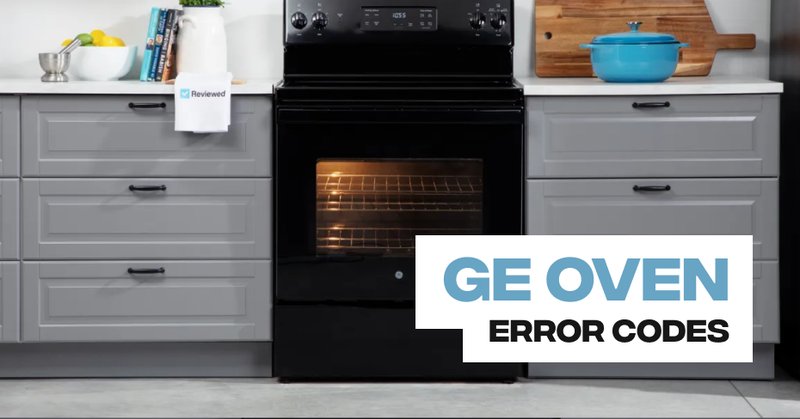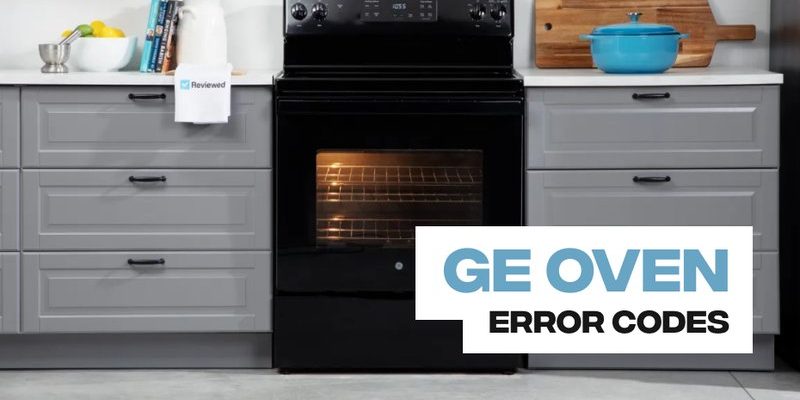
When you see an error code like “OE,” it’s your appliance’s way of saying, “Hey, there’s something you should check out!” But don’t worry—it’s not as intimidating as it looks. This code often relates to an issue with the oven’s clean cycle or temperature sensor. Think of it like a car alerting you to check the oil or a smoke detector running low on battery. Ignoring it might be possible in the short term, but it’s not wise in the long run.
Understanding the OE Error Code
Seeing the “OE” error code on your GE oven can be unnerving, especially if you’re not familiar with what it means. At its core, this code usually indicates a problem with the oven’s clean cycle system. This could mean the oven thinks it’s overheating or there might be a sensor that’s not functioning properly. Imagine it like having a thermometer that’s not quite right—it might say you’re running a fever when you’re not.
The OE code is essentially telling you to hold up and take a closer look. This warning can sometimes be triggered by a glitch, such as a power surge or a temporary anomaly. However, persistent display of this code usually means more than a fleeting hiccup. Understanding the underlying cause helps you decide whether you can safely ignore it or if it needs immediate attention.
Ignoring the OE code over time can lead to more significant issues. For instance, if there’s actually a malfunctioning temperature sensor that goes unchecked, it could lead to uneven cooking or even safety hazards. Taking the time to understand and address this error not only keeps your appliance in good health but also ensures your cooking experiences remain smooth and predictable.
What Causes the OE Error Code?
Delving into what triggers the OE error, let’s consider your oven as a team of various component players, each doing their part to bake that perfect pie or roast your Sunday chicken. When one of these players, like the temperature sensor or the self-cleaning mechanism, is out of sync, it can trigger this error.
A common cause for the OE code is a fault in the oven’s self-clean cycle. This cycle is crucial for maintaining a clean oven interior without the hassle of manual scrubbing. If the oven believes it’s overheating during this cycle, it sends out an OE error, much like a car’s warning light signaling an engine check due. Sometimes, the issue might be as simple as a faulty door latch that interrupts the cycle.
Another potential cause could be sensor-related—specifically, the temperature sensor. These sensors relay critical data about the oven’s internal temperature. If the sensor’s readings go awry, the system gets confused and flags this error. Imagine using a broken ruler to measure your wall for a new painting—it’s bound to give you an inaccurate picture!
Steps to Fix the OE Error Code
Now that you’re aware of what might be causing the OE code, let’s talk about troubleshooting. First off, try resetting your oven. Turn it off, unplug it for a few minutes, and then plug it back in. This can sometimes clear minor glitches, much like rebooting a computer to shake off a temporary bug.
If resetting doesn’t work, check the door latch. Make sure it’s firmly closed and not obstructed. Sometimes, a simple misalignment can cause the error to persist. Think of it as closing the lid on a box before carrying it—ensuring it’s secure avoids any mess.
Should these steps not resolve the issue, it might be time to check the temperature sensor. This can be a bit technical, requiring a multimeter to test the sensor’s resistance. If this sounds daunting, or if the issue remains unresolved after your best efforts, it’s wise to contact a professional. A repair technician can diagnose and fix the problem, ensuring your oven returns to its fully operational state.
Consequences of Ignoring the OE Error Code
You might be wondering, “What happens if I just ignore this?” Ignoring the OE error code can have a ripple effect on your oven’s performance and longevity. Much like turning a blind eye to a constant check engine light in your car, it’s not a risk-free choice.
An unresolved OE code could lead to improper oven functioning. Inefficient oven performance impacts cooking results—imagine eagerly waiting for a cake, only to find it unevenly baked due to inaccurate temperature readings. Furthermore, there’s the safety aspect. A potentially defective temperature sensor could cause overheating, which is a risk to your kitchen and home safety.
Additionally, neglecting these warning signs can lead to more costly repairs in the future. Just like a small leak ignored in your roof can lead to significant water damage, a small issue in your oven can grow into a larger, more expensive problem.
Preventing Future Error Codes
The best way to handle appliance errors is to prevent them. Regular maintenance of your GE oven can go a long way. Clean the interior regularly, ensuring there’s no debris or residue that could interfere with its functions. Consider routine checks or professional servicing to keep all components in tip-top shape.
Also, be gentle with your appliance controls and avoid excessive slamming of the oven door, which can stress the latch over time. Treat your oven with the same care you’d give other valuable home assets—like your car or computer.
In conclusion, while it might be tempting to ignore that OE error code flashing on your GE oven, addressing it sooner rather than later prevents more significant troubles down the line. Your oven is a crucial part of your kitchen setup, deserving of attention and care to keep your culinary adventures delightful and trouble-free.
